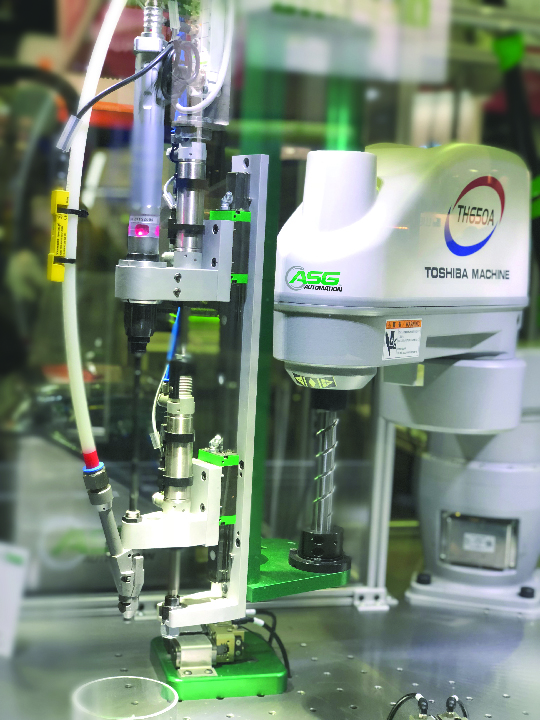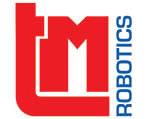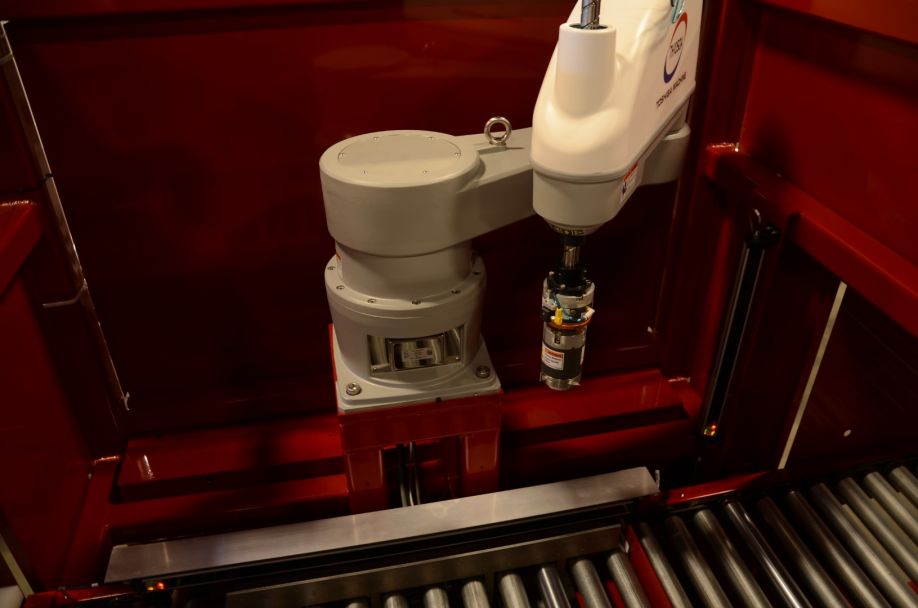The World Robotics 2020 Industrial Robots report shows a record 2.7 million industrial robots are operating in factories around the world — and many of those are integrated into larger equipment.
 What OEMs Look for in the Perfect Robot Supplier
What OEMs Look for in the Perfect Robot Supplier

Nigel Smith, CEO | TM Robotics
Any equipment with a robotic element requires integration of automated technology. For instance, incorporating a traditional robot arm onto a pick-and-place machine or adding automated movement onto otherwise static industrial equipment.
Robotic supplier and Shibaura Machine distributor, TM Robotics, works alongside machine builders to help them choose the correct robot for their application and understands the intricacies that OEMs need to consider.
Flexibility
OEMs often require more flexibility than an off-the-shelf robot can deliver. At TM robotics, we partner with machine builders to create new robot variations to meet their unique needs. Grabit, a company specialising in electro-static adhesion solutions for material handling, provides a good example of this.
Grabit was developing a machine to automate the materials handling process to assemble the upper of shoes. Intrigued by Shibaura Machine’s SCARA robot range, Grabit turned to TM Robotics for support.
To meet Grabit’s unique requirements, the Shibaura Machine engineering team in Japan re-structured some of the THL1000 SCARA robot key features. Due to the size of the gripper Grabit planned to use, the Japanese engineers maximised the speed, minimised the cycle time and stopped vibration with some fine tuning of hardware and software.
“TM Robotics support and customization process were not limited to phone calls and e-mails,” explained Harsha Prahlad, co-founder and chief technology and products officer at Grabit. “They were able to talk to us in a language that our technical team understands and allowed us to fine-tune the machine to our exact requirements, not many robot companies allow for that level of personalisation.”
When choosing a robot supplier, determining the level of customisation they can deliver is essential. For OEMs with complex machinery or unusual applications, embarking on future iterations and modifications to meet customisation needs could prove to be much more costly.

Robot choice
For customers that aren’t well-versed in robot terminology, choosing the correct machine can be daunting. SCARA, six-axis and Cartesian are the three most common industrial robots’ types and offer a good place to start for those new to robotic technology.
Selective Compliance Articulated Robot Arms — otherwise known as SCARA robots — are designed to mimic the action of a human arm, albeit a slightly rigid one. SCARA robots can automate assembly or loading and unloading tasks with speed and precision by offering fast motion in the X and Y axis. These robots are ideal for applications requiring fast and repeatable movements, like electronics assembly.
Six-axis robots offer more flexibility. Typically, these robots are mounted on a pedestal and offer the most directional movement. The robot arm can move in the X, Y and Z planes as well as positioning itself using roll, pitch, and yaw movements.
Cartesian robots use a one-dimensional motion to boost high reliability. Using between three and four sliding joins, Cartesian robots are suitable for fast parts assembly, conveying and transfer applications. Focusing on providing ease of operation, TM Robotics’ range of Cartesian models also requires little-to-no programming. Sometimes, however, an off-the-shelf robot will suffice.
“Shibaura Machine have a full range of Cartesian, SCARA and 6 axis robots which are ideal for our various requirements involved in the different soldering machines” explained Albin Müller, managing director of ELMOTEC, a user of TM Robotics’ robots for its range of soldering machines.
The ease of programming is a huge benefit and the flexibility of product in terms of reach and payload mean that we can select the right robot for the project in terms of specification and price.”
Software Control
Having an industrial robot that can provide software control can increase productivity and safety to your machinery, especially in precise and repetitive operations. CASI, a specialist machine builder of automated machinery, partnered with TM Robotics to create the Intelligent Box Opening Device (IBOD).
TM Robotics customised the internal parameter and PLC settings to enable the robot to cut boxes efficiently. Utilising this built-in intelligence, IBOD takes readings from photo optics and linear displacement sensors to measure the dimensions of each box before positioning it for cutting.
Software-controlled automation lets IBOD cut boxes according to bespoke specifications. This also helps the robot to avoiding damages when finding obstruction in the cutting process, such as metal staples or tape.
“We chose the Shibaura Machine TH1050A SCARA for our IBOD and box cutting projects as it is arguably the strongest, and one of the most rigid arms on the market,” explains Jeff Grindstaff, product manager at CASI. “The support from the engineering team has been excellent as we have been able to custom build algorithms in the Shibaura Machine internal PLC, which is built into as standard with the SCARA controller to monitor torque settings when cutting the box.
“With this additional function we have been able to not worry about damage to the robot when cutting difficult cardboard.”
Training
Machine builders and OEMs can also benefit from training from their robot supplier. Thorough training can ensure that robot programming and control is simple — and the OEM isn’t left with a robotic machine that they aren’t able to program correctly. It is paramount to ensure the supplier has delivered a compressive training process and, where possible, can pass this technical support onto the OEMs end users.
ASG, a certified manufacturer, provider for automated solutions worked alongside TM Robotics to develop robotic screw feeding solutions. “The robustness of the robot’s arms was one of the key points in choosing TM Robotics, as we have a unique geometry with end of arm tooling” said Bryon Shafer, General Manager of ASG Jergens.
“Because of this specification we wanted a company that could be on hand to answer any questions that we had, TM Robotics not only delivered with their products, but also with their stellar customer service.
“By having a person on hand to answer questions and walk partners and customers through their installation, issues get solved in a timely manner.”
TM Robotics training courses delivered in person or remotely by professional robot engineers, who provide a wealth of experience and expertise in Shibaura Machine’s automation products.
The content & opinions in this article are the author’s and do not necessarily represent the views of RoboticsTomorrow

TM Robotics (Americas) Inc
TM Robotics, in partnership with Shibaura Machine, formerly known as Toshiba Machine until 1st April 2020, offers a comprehensive range of industrial robots ideally suited for high-precision assembly, machine loading/unloading and material-handling applications that can be dust proof, clean room, or IP65/67. The company's extensive product line starts with a Cartesian solution available in thousands of combinations from single actuators to four-axis solutions; six-axis solutions that can include precise vision-control; and a complete range of SCARAs from low cost to the industry-leading SCARA with 1200-mm reach that can carry up to 20 kgs. TM Robotics sells and services robots throughout Europe, the Middle East, India, Russia, and Africa, as well as North, Central, and South America, from headquarters in Hertfordshire, England and Elk Grove Village, IL, USA. For more information, visit www.tmrobotics.com or follow us on Twitter, LinkedIn and YouTube.
Other Articles
Investing in the UK’s injection moulding sector - The case for all-electric machines and robotic integration
Robotic solutions for pharmaceutical packaging - Automated system addresses key limitations of manual processes
Automating pick-and-place in food manufacturing
More about TM Robotics (Americas) Inc
Comments (0)
This post does not have any comments. Be the first to leave a comment below.
Featured Product


